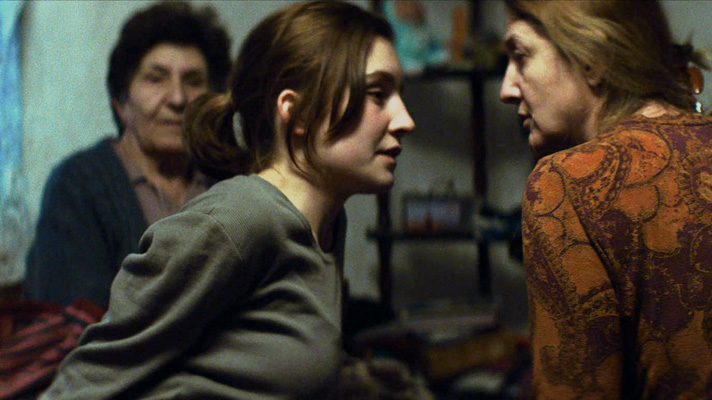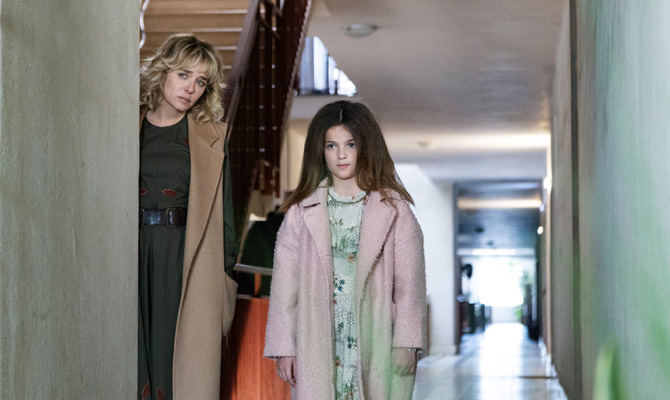A Teen Impeded, a Child Impaired
Two films that conspicuously stood out were linked in their subjects’ growing up in societies that are often harsh and overlook the challenges faced in rites of passage. Viswanath Subrahmanyan commends the directors of both these films for extrapolating the psychological nuances of their everyday problems.
Two films, so diverse in their approach to the subject at hand to covet one’s attention, featured as part of the Young Cinema Competition at the 45th Hong Kong International Film Festival.
The first one was from Kosovo; Looking for Venera (Në kërkim të Venerës, 2021) by debutant woman director Norika Sefa, the other from Italy, Fortuna: The Girl and the Giants (Fortuna, 2020) a debutant directorial foray by Nicolangelo Gelormini.
With Looking for Venera, Sefa adopts a more accessible, linear narrative to present a character study of a taciturn and reticent young girl, shackled, stifled and suffocating in the traditional and patriarchal system. A despotic, disciplinarian dad who impinges upon her natural aspirations that would otherwise give wings to her free spirits and break free from the hemmed in confines of her chortling homestead.
Set in a remote village, in Kosovo’s rugged countryside, Looking for Venera, which picked up the Special Jury Prize at Rotterdam Film Festival, is a proverbial coming of age tale consistent with every teenager seeking to emancipate themselves from their claustrophobic and constricted existence.
The film is sensitively and deftly told, through a well-constructed cinematographic design of extreme close-ups to take audiences into the tense drama unfolding and the boxed in milieu, while also subtly commenting on the socio-political situation in Kosovo which has seen a new woman president take over.
Director Sefa justifiably turns her teen treatise into a rite of passage towards female empowerment, capturing in vivid details the stultifying situation in the patriarchal set up (bringing to mind the recent Indian Malayalam film The Great Indian Kitchen). Sefa’s Venera, however, turns a tad downer due to her skewed focus on sexual awakening as a means of liberation and defiance rather than other modes of emancipation and empowerment of women.
By ensuring Venera (who espies liberated mentor Dorina indulging in sex) finds her own sexual liberation by losing her virginity to classmate Nol, Sefa may have sought to make a common cause with women folk. However, there is more to female empowerment, and personal freedom, then mere sexual liberation, which Sefa unfortunately fails to delve into, compromising the film’s assimilative aesthetics.
Gelormini, on other hand, adopts a more classical and cinematic idiom in his nuanced and sensitive exploration of a social malaise afflicting our society in Fortuna: The Girl and the Giants.
Taking a geometric and architectural visual design structure to draw audiences into the inner recess of abused children, Gelormini brings in an element of magical surrealism in his narrative, providing a haunting and eerie spine chilling fantastical sojourn into the troubled souls.
Dark, dismal, playful and probing, Gelormini’s Fortuna revolves around Nancy/Fortuna, a troubled young girl who her mother/psychologist says is suffering from “temporal disorientation syndrome”. Cleverly playing on the dual aspect Nancy/Fortuna, mother/psychologist, in equally apportioned narrative, Gelormini weaves a wondrous disturbing tale of a true story, thus making it a most haunting cinematic sojourn.
That Fortuna/Nancy and her playmates are driven to seek solace in a fantasy world subsumed to silence, with adults unable to decipher the suffering souls and their fractured minds, speaks of the real life tragedy of a six-year-old and the blighted childhood of his many friends.
With fluent camerawork, taking his audiences through the byzantine, silent corridors of the apartment complex, and the subway, creating a fantastical, mystical world, Gelormini leaves it upon audiences understanding of cinema language to digest the horrible secret unveiled at the end.
In a way, both the films, can be looked at as companion pieces, in that in both the protagonists represent a universal truth that both women and children face even today, seeking to exorcise the demons of their debilitating surroundings that has stifled their natural development to become free, unencumbered citizens and responsible adults in society.
Both films help empathize with silent suffering victims crying in the wilderness to be heard and the insufferableness of their duality of existence.
Viswanath Subrahmanyan
© FIPRESCI 2021
Edited by Steven Yates


